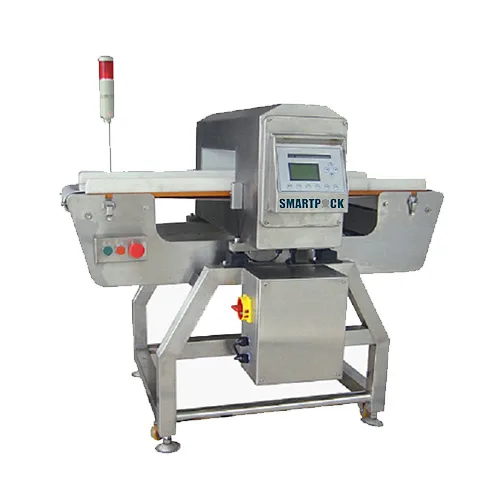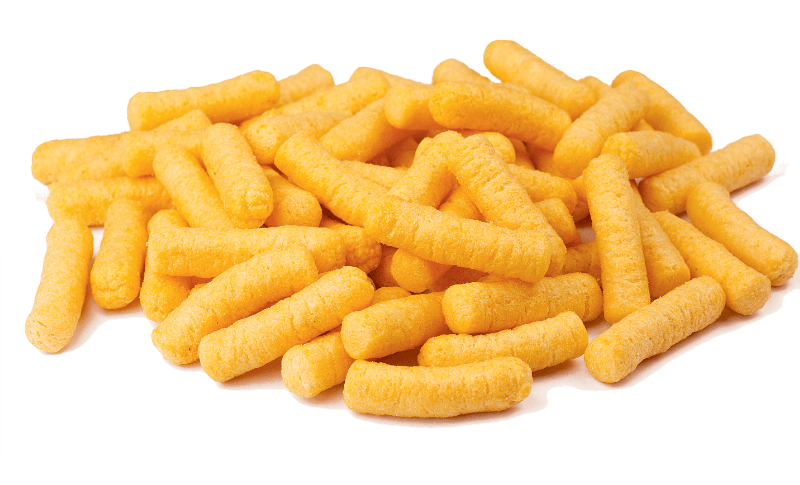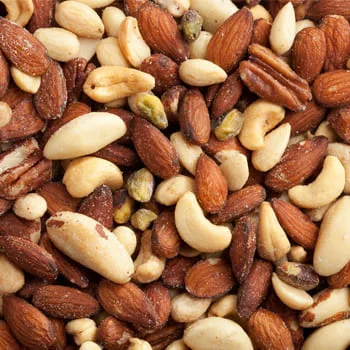You may see precision engineering in the snack aisles of stores. There is complicated packaging science behind every bag of chips that is the right size, every trail mix container that is the same size, and every pouch that is packed the same way. As more people want different kinds of snacks, manufacturers need to keep making good products and making money.
Not only is speed crucial, but so is being able to quickly adjust to changes in product types and packaging sizes while also being able to cut portions with surgical precision.
To speed up manufacturing and make it more consistent, snack makers increasingly use integrated packaging lines. The key is to know how modern multihead weighing technology works with different types of packages to make complete snack production solutions.
What Are the Main Challenges in Supermarket Snack Packaging?
The packaging for snacks at supermarkets is different from other types of food packaging because it has its own set of problems. Packaging lines must meet a lot of different needs at the same time because of the wide range of products, customer expectations, and store needs.
A. What the Market Wants
The snack industry nowadays needs a lot of flexibility. For the same product, manufacturers have to make different packaging sizes: 25g single-serve portions for grab-and-go convenience, 150g standard bags for everyday use, and 400g family-size packages for bulk customers. Each format needs a different way to fill, seal, and handle the product while yet keeping the same quality and brand consistency.
As people become more health-conscious and rules are stricter, portion control is becoming more and more important. Nutritional labeling has to be right, which implies that the real weights have to be very similar to the reported weights. Even slight differences can cause problems with compliance or make customers unhappy.
The way a package looks has a direct effect on how well it sells. The snack must fit nicely in the package without too much air space. Chips and other fragile items must stay undamaged and look good when they are being sent and displayed on store shelves.
B. Problems with production
The main problem is finding the right balance between speed and accuracy. Volumetric filling in the traditional way can be quite fast, but it doesn’t have the accuracy needed for uniform portioning. Weighing by hand is accurate, but it slows things down and raises labor costs.
When manufacturing schedules call for frequent changes to products, format flexibility becomes very important. A line that takes hours to switch between different types of snacks costs a lot of time and makes the equipment less productive overall. For modern operations, changeover times should be measured in minutes, not hours.
Quality control is more than just making sure the weight is right. Snack foods are very easy to become dirty, get wet, or get damaged when they are being handled. The packing line must work at commercial speeds while keeping the product safe.
In the competitive snack market, the urge to minimize costs is growing. The difference between the actual fill weight and the goal weight for a product giveaway has a direct effect on how much money it makes. For businesses that give away a lot of stuff, cutting back on giveaways by 2% to 3% can save them a lot of money each year.
Which Equipment Components Are Essential for Snack Packaging Lines?
Modern snack packaging lines use a number of advanced parts that work together to make sure that all types of products obtain the same outcomes. Manufacturers may make smart choices regarding their packaging investments if they know what each part does.
A. Multihead Weigher: The Heart of Precision

The multihead weigher is the most important control point for making sure that portions are correct and that production goes quickly. The best balance between accuracy and throughput is found in advanced 14-head systems, which are the current standard for high-performance snack packaging.
In snack production areas where dust, oil, and moisture are widespread, IP65-rated protection is a must. This grade makes sure that the machine works well even when it is processing greasy chips or extruded goods that are dusty. The sealed design keeps dirt out and makes it easy to clean between runs of products.
Gentle handling technology takes into account how easily various snack foods might break. Feeding systems with vibration control and cushioned discharge mechanisms reduce the risk of product breakage, which is especially important for fragile foods like kettle-cooked chips or rice crackers. The system needs to hold the objects tightly enough to provide an accurate weight without damaging them.
With quick-release hoppers, you can quickly clean and switch between different products. This feature is quite important when transitioning between flavored and unflavored foods or between salty and sweet snacks. Disassembling without tools cuts down on changeover time and makes sure that everything is cleaned thoroughly.
The target weight adaptability feature lets the same system work with snack packages of all sizes. Modern systems can accurately measure the weight of packages from 10g single-serve packs to 500g family packs, and they do it with the same level of precision across the board. This adaptability makes the most of the equipment and lowers the amount of money needed to buy it.
B. VFFS Integration for Pillow Bags


Most of the snack food packets you see in stores are made using Vertical Form Fill Seal (VFFS) machines. The total performance of the line and the quality of the packages depend on how well the multihead weighers and VFFS systems work together.
The weigher and VFFS are connected in such a way that there are no timing problems that could lead to spillage or wrong fills. Advanced control systems make sure that the weighing cycle and bag formation happen at the same time, so that each chunk falls into the right bag.
Depending on the size and type of goods, high-speed operation can handle 120 bags per minute or more. Manufacturers can keep up with tight production deadlines while still meeting high quality standards at this speed.
Easy film changeover solutions cut down on downtime when you transition between package styles or sizes. Quick-change mechanisms for film rolls and easy adjustments for varied bag sizes help keep production going smoothly.
C. Quality Control Integration
Quality control systems discover faults before items reach consumers, which protects the brand’s reputation and makes sure that all products are the same.


Checkweighers are the last step in making sure that each package fulfills weight requirements. These systems can either sort packages into “accept” or “reject” groups or send feedback to upstream equipment so that it can keep getting better.
Metal detection systems are very important for food safety since they can find any metal contamination that might happen during processing or packing. This protection is especially crucial for snack foods that are handled a lot by machines.
Reject mechanisms automatically take packages that don’t meet standards off the production line without halting work. Air blast or pusher systems send packages that have been rejected to other areas for inspection and possible rework.
These parts work together to make a complete system that handles all aspects of snack packaging while also being flexible enough to handle a wide range of products. Proper component selection and integration determine whether a packaging line becomes a production asset or a bottleneck that limits overall facility performance.
How Do Different Snacks Need Specialized Packaging?
Modern integrated packaging lines with multihead weighers and VFFS systems can handle a variety of snack products with precision and flexibility.
Crisps & Chips

Due to their fragility and value density, potato chips are perfect for multihead weighers. Classic volumetric filling is unreliable because to chips’ lightweight, irregular nature, resulting in large weight fluctuations between packages.
Multihead weighers are ideal for sensitive products since they achieve precise accuracy within ±1 gram, even for small 25g packages. Premium kettle-cooked, normal potato, and veggie chips have gentle discharge systems that prevent crushing and maintain portion control.
Snack Extruded

Due to their low density and static electricity generation, cheese puffs, corn curls, and rice crisps present particular issues. For target weights, these items need huge hopper volumes, making typical weighing procedures unfeasible.
For pleasing texture, multihead weighing devices meet volume requirements with soft handling. Switching extruded types without setup time is easy with quick-changeover features.
Nuts, trail mixes

Accuracy affects profitability for high-value products such mixed nuts, trail mixes, and nut-based snacks. Multihead weighers can accurately weigh different item sizes and densities, benefiting these products.
Trail mixes benefit from the technology’s ability to preserve ingredient ratios, ensuring each packet has the intended component distribution rather than just precise weight. Handle dried cranberries and cashews gently to avoid damage.
Snacks with Granules and Powder
Seasoned nuts, popcorn, and granulated snack mixes work nicely with multihead scales. Fine particles are contained in the enclosed weighing environment, preventing cross-contamination between flavors.
IP65 protection enables reliable operation with dusty products, and easy-clean design allows full sanitization between flavor changes. Seasoned chickpeas and granulated cheese snacks have proper portioning and seasoning.
Multi-Format Products
Due to system adaptability, integrated packaging lines assist snack manufacturers most. One line can efficiently make potato chips in the morning, trail mix in the middle, and extruded snacks in the afternoon.
Unlike several dedicated lines, this flexibility increases equipment utilization while minimizing capital expenditure. Quick-changeover and recipe storage make multi-product operations economical and practicable for manufacturers wanting to improve accuracy, speed, and flexibility across varied product portfolios.
What Operational Benefits Can Snack Manufacturers Expect?
Investing in contemporary integrated packaging lines makes a big difference in many aspects of operations. These gains usually make it worth while to buy new equipment within 12 to 18 months since they save expenses and boost production.
A. Accuracy Improvements
Giveaway reduction represents the most immediate and measurable benefit. Traditional packaging methods often result in 3-5% product giveaway as operators overpack to avoid underweight packages. Modern multihead weighing systems consistently achieve giveaway levels under 1%, with many installations reaching 0.5% or better.
For a manufacturer producing 1000kg of snacks per hour, reducing giveaway from 3% to 0.5% saves 25kg per hour—equivalent to 200kg per day or over 50 tons annually. With snack products valued at $3-8 per kilogram, this translates to substantial cost savings that continue throughout the equipment’s operational life.
Consistent portion sizes help create consumer trust and make sure that the rules are followed. Consistent weights help make sure that nutritional labels are correct and avert expensive recalls or problems with the law. This dependability is especially useful for high-end products because sales are directly affected by the brand’s reputation.
Waste reduction includes more than just giving away less; it also means fewer rejected packages, less rework, and very little spillage during production. Advanced systems usually have reject rates of less than 0.1%, while older manual or semi-automatic procedures have rates of 1% to 3%.
B. Production Efficiency
Speed optimization allows manufacturers to achieve 60-200+ packages per minute depending on product type and package size. This capability often doubles or triples output compared to manual operations while maintaining superior accuracy. The consistent speed also enables better production planning and delivery scheduling.
Changeover time reduction from hours to under 15 minutes between different product types dramatically improves equipment utilization. This flexibility allows manufacturers to respond quickly to market demands and optimize production schedules around ingredient availability and customer orders.
Uptime improvement results from robust design and preventive maintenance features. Modern systems typically achieve 95%+ availability compared to 85-90% for older equipment. The improved reliability reduces emergency repairs and production disruptions while enabling predictable maintenance scheduling.
How Do You Choose the Right Packaging Line Configuration?
Analysis of production needs, product attributes, and growth expectations is needed to choose the best packing line configuration. Matching equipment to operating needs while keeping flexibility for future needs is the goal.
Production Volume Considerations
Basic VFFS systems and 10-head multihead weighers work well for small operations under 50 bags/min. This setup outperforms manual procedures in accuracy while requiring less capital. The flexible systems handle different product kinds and produce reliable results that boost corporate growth.
Most medium production plants (50-80 bags/min) need 14-head weighing systems with advanced controls. These configurations handle high speeds and precision across product lines. The additional weighing heads improve speed-accuracy balance and allow for varying package sizes in the same production cycle.
Dual-line or high-speed single lines are typically used for 80-150 bag/min operations. These setups maximize throughput and provide redundancy to prevent production shutdowns during maintenance. High-capacity systems pay for themselves quickly in output and labor savings.
Product Mix Flexibility
For specialized production lines, single-product focus optimizes snack qualities for efficiency and accuracy. This method limits flexibility but performs well for high-volume typical items.
Fast-changing and extensive recipe storage are needed for multi-product lines. These systems are more expensive but offer operational flexibility for different product portfolios and market responsiveness. Manufacturers of several snack kinds usually find the expenditure worthwhile.
Seasonal demand may justify expanding systems for peak production. Modular designs provide interim capacity increases without equipment overinvestment.
Integration Needs
Whether retrofit integration or line replacement is better depends on equipment compatibility. Newer VFFS machines work well with current weighers, but older ones may need to be replaced.
Facility constraints including floor space, ceiling height, and utilities affect equipment selection and layout. Constrained facilities may sacrifice performance for space efficiency with compact configurations.
Our Smartpack technical experts can look at your production needs, your facility’s limitations, and suggest the best and cheapest way to package your snacks. Call our team today for a full evaluation and a personalized plan that will help you solve your specific problems and set your business up for future development and profit.
Conclusion
For snack makers who want to stay competitive in today’s tough market, complete packaging lines are game changers. New multihead weighing technology in modern VFFS systems makes them more accurate, faster, and more efficient, which increases profits.
Lowering costs isn’t the only way to get ahead of the competition. Better portion accuracy leads to higher prices and creates trust with customers, while flexible production lets companies respond quickly to changes in the market. Because of lower personnel costs and more stability, management resources may be deployed for strategic growth instead of putting out fires.
The investment is worth it because it leads to less product giveaways, faster production, lower labor costs, and better product quality. Most installations pay for themselves in 18 months, and the benefits extend for the life of the equipment.
It is important to work with suppliers who have a lot of expertise and know how to meet the technical needs of snack packaging and the business needs of manufacturers. The best setup of equipment, including installation and support, helps a firm grow and make more money.
Get in touch with our packaging specialists to look at your operations and see how integrated packaging solutions could make snack production better.
